Advancement of Climate Smart Agricultural Technologies
Work Package 2
The overall objective of the action is to strengthen the capacity of the Faculty of Agriculture, University of Mauritius in research and training to promote sustainable agriculture for improved food security in response to climate change.
Our Team
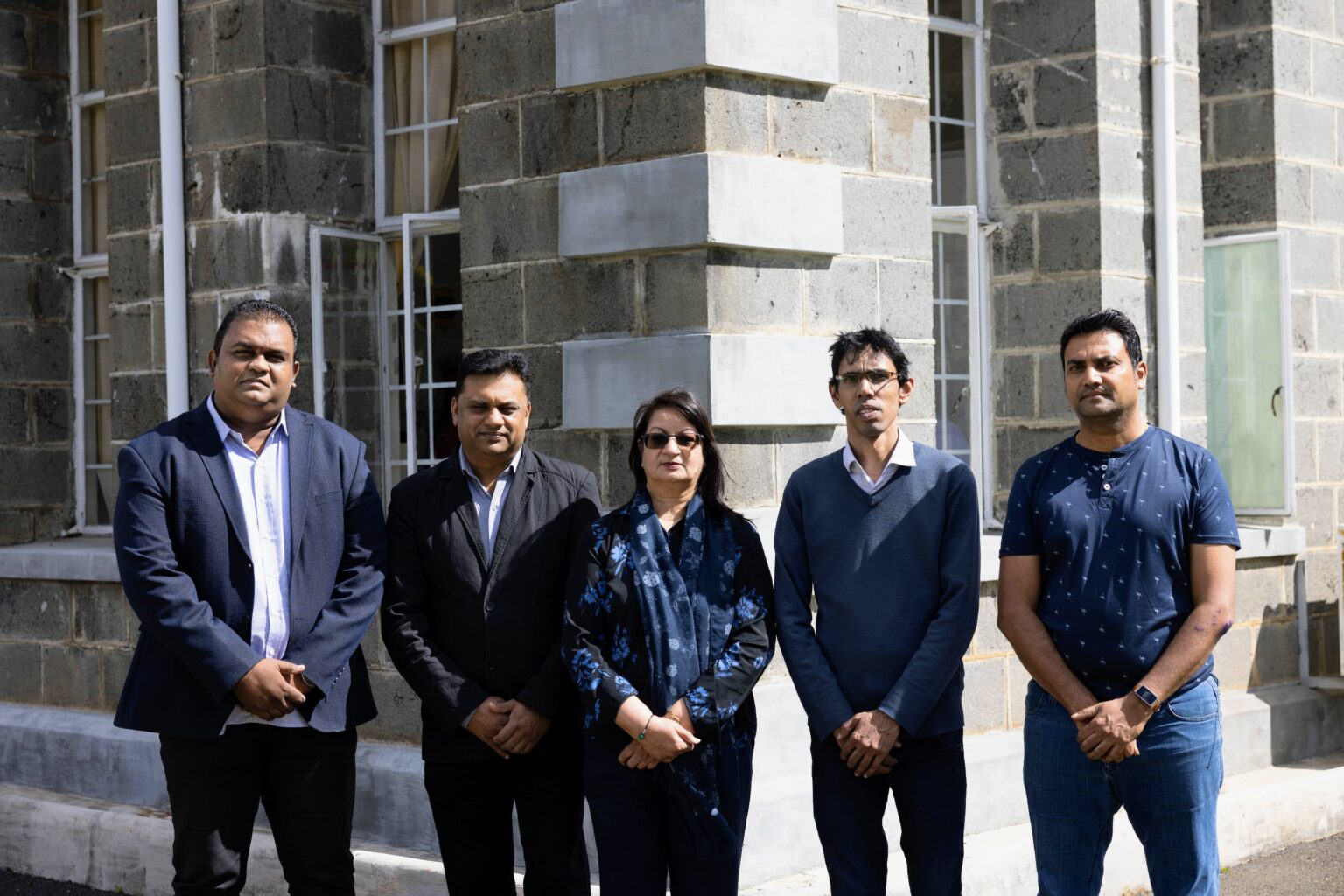

A package of climate-smart technologies for agriculture in Mauritius and Rodrigues developed.



















Timeline
Workshop at Bois Pignolet Community Center
Workshop at Bois Pignolet Community Center (63 participants) and at Morcellement St Andre Khoyratty Community Center (50 Participants) in collaboration with the Sugar Industry Labour Welfare Fund and F.A.L.C.O.N
Oct 2020
Workshop at Mapou
Workshop at Mapou in collaboration with the Sugar Industry Labour Welfare Fund and F.A.L.C.O.N
Feb 2021
Webinar: Food Loss and Food Waste International Day
Webinar on the occasion of the international day of awareness of food loss and food waste
September 2021
Online Focus Group
Online Focus group with Stakeholders on 'Enhancing Food Safety, Food waste reduction and food innovation'
May 2022
Webinar on Food Waste
Webinar on ' Food Waste Reduction and Recovery' for Students in Rodrigues
May 2022
Food Waste Reduction Workshop
Workshop on "Food Waste Reduction; it is our responsibility' with Mauritius Revenue Authority Staff
June 2022
Food Waste Campaign
Campaign on " Together, We can Fight Food Waste at St Nicholas Grammar School"
June 2022
Women Entrepreneur Workshop
Workshop on the 'Valorisation of Food Waste' with women entrepreneur
June 2022
International Day of Awareness on Food Loss
Celebrating International Day of Awareness on Food Loss and Food Waste Reduction
September 2022
Train The Trainers
Train the Trainers Workshop with 18 Home economies instructors and officers on " food waste reduction at household level"
January 2023
Output of WP2
2.1.1 To install and calibrate sensors;
- A conceptual model for integration of sensors data such as soil moisture, temperature, humidity and pressure has already been designed.
- Calibration of gateway and sensors have been completed.
- A mobile App for displaying the sensor data has been designed and implemented.
- Data is currently being collected however some fine-tuning is required for the transmission of the various sensor data in a single block transmission and the removal of noise data.
- Deployment is to be done on UoM farm.
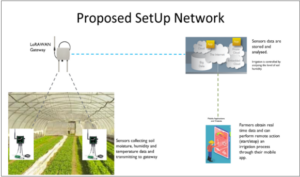
Figure 2.1.1: IoT structure
2.1.2 To create a conceptual model for supporting the integration of the diverse data sources;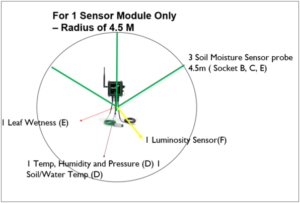
Figure 2.1.2: Sensor module
Aim: To develop an aquaponics unit for vegetable and legume production at house level for use as a model
Scope: Aquaponics is an emerging area of activity that is being given a lot of emphasis by Government. Setting up of small aquaponics unit at household levels will contribute to national food security, reduce our food import bill and help provide better and nutritious food to households. It can also be developed by SMEs and other agripreneurs as a novel business opportunity.
Activities
2.2.1 Designing and setting up a small-scale aquaponics system;
- Aquaponics has garnered significant attention as an ecologically sustainable solution to bolster agricultural productivity. This system establishes a harmonious interplay wherein beneficial bacteria harness the byproducts of fish wastes, predominantly in the form of ammonia. Through the nitrification process, these bacteria facilitate the conversion of ammonia into nitrate, subsequently introducing this nitrate compound into the aquatic environment.
- A small-scale low-cost aquaponics unit was set up and tested for lettuce production at household level. The technique used was the deep-water culture, using the floating raft method. Afterwards the unit was successfully used to produce kale. Three recirculating aquaponics systems were designed and set up to evaluate kale production. Plant parameters were evaluated at different growth stages for both lettuce and kale production. Both lettuce and kale production were successfully grown using this system of production.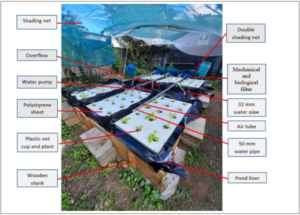
Figure 2.2.1: Small scale low cost aquaponic set up for household food security (lettuce production)
2.2.2 Optimisation of all the key water and crop parameters for an efficient and effective aquaponics unit;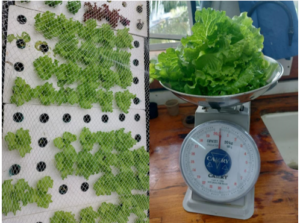
Figure 2.2.2: Lettuce at beginning of production and at harvest stage
2.2.3 Testing the vegetables and fish from the aquaponics units for safety, quality, taste, and acceptability.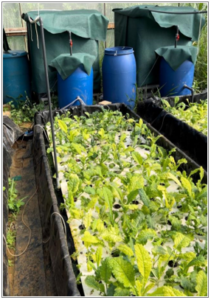
Figure 2.2.3: Kale production using low cost aquaponic system.
Aim: To develop a web/mobile based application for forecasting of selected pests and diseases of the chosen leguminous crops
Aim: To develop a package of CSA technologies for organic, sheltered and conventional production of the selected leguminous crops
- Based on the literature review and trials undertaken so far, write-up of the recommendation sheets for organic and CSA-based technologies are under progress.
- The use of deficit irrigation to save fresh water
- Microbial inoculants to boost natural soil fertility
- Use of rhizobacteria to minimise dependence of fertilisers and mitigate plant stress
-Use of biofertilizers to increase crop yield under low external inputs system
-Use of OMRI/ECOCERT-approved biopesticides to control pests and diseases of legume crops. - Soil mulching to conserve water and reduce weed incidence
Organic production is a system whereby no synthetic chemicals are used during the production of a crop. Successful organic production is achieved by following bio-practices, one of them being organic mulching. Organic mulch is the application of a layer of natural origin on the soil surface to prevent the growth of weeds. Common bean is a legume that is crucial to the diet of Mauritians and different types of organic mulches were tested on common bean production. The objectives were to evaluate the efficacy of different mulches in suppressing weeds and to assess their effect on the growth and yield of beans.
2.4.1 Refurbishment of the existing organic plot to make it suitable for the proposed research work;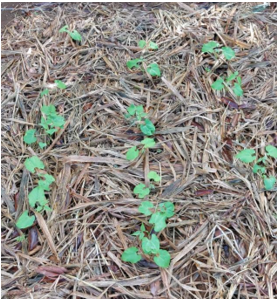
Figure 2.4.1: Wood chip mulch
2.4.2 Conducting trials on various agronomic practices for legume production within organic, sheltered and conventional CSA-based systems;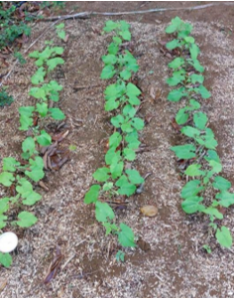
Figure 2.4.1: Wood chip mulch
2.4.3 Development of an optimised package of organic, sheltered and CSA-based conventional technologies for each of the selected leguminous crop.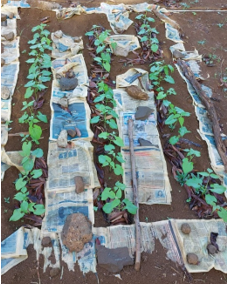
Figure 2.4.3: Soil compost mulch
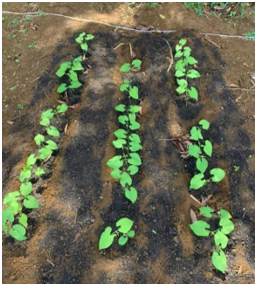
Figure 2.4.4: Newspaper mulch
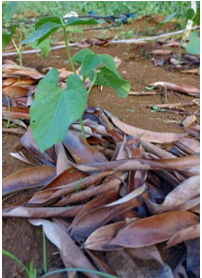
Figure 2.4.5: No mulch
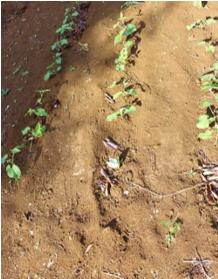
Figure 2.4.6: Dry leaves mulch
The most effective weed suppressing mulch on the organic plot was found to be the use of newspapers as mulching materials. On the other hand, plants grown using soil compost as mulch achieved the highest yield of common beans.
- Assessment of common beans production in different growing environments
Climate change poses several threats to agriculture, impacting crop production, food security, and livelihoods of farmers worldwide. To cater for the above-mentioned issues, controlled climate agriculture could be put into place whereby various aspects of the growing environment could be controlled and optimized to create ideal conditions for plant growth and development. Common beans were produced under different environmental conditions (open field, glasshouse & plastic house).
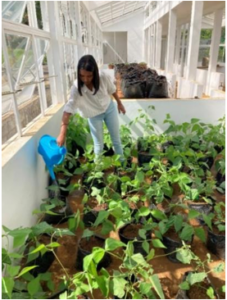
Figure 2.4.7: Common bean production in glasshouse
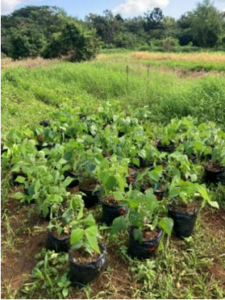
Figure 2.4.8: Common bean production in open field
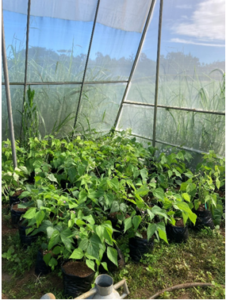
Figure 2.4.9: Common bean production in plastic house
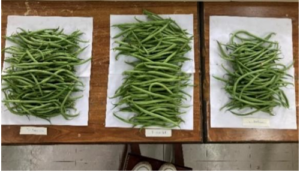
Figure 2.4.10: Difference in yield between glasshouse(T2), plastic house (T3) and open field (T1) production.
Highest yield was observed under plastic house production which was due to the synergy between temperature, relative humidity and light intensity which have created the most appropriate micro-climate for maximum common bean production.
- Vermi-compost and Vermi-wash production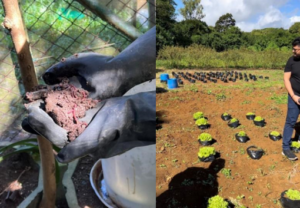
Figure 2.4.11: Vermicompost and Vermiwash production.
The application of vermicompost and vermiwash has produced promising result for the preliminary assessment. The experimental trial is still ongoing and the final result is being awaited.
- A preliminary trail has been carried out on the use of botanical pesticides to control pod borers of pigeon peas. The botanical pesticide has proved to be highly efficient and now the trial will be upscaled.
Aim: To investigate various water use technologies for use by small scale farmers
Scope: Water management is a key issue in agriculture. The present study proposes to test several types of water regimes (deficit irrigation, field capacity, and normal), as well as different application rates.
- Different irrigation systems (drip and micro-spinkler) were evaluated for Soybean production (Glycine max.(L).
With the increasing world population by 2050, more crops will need to be produced for which more irrigation water will be required, therefore there is a necessity to adopt appropriate irrigation techniques especially in developing countries. There is also growing interest worldwide in using leguminous crops such as (Glycine max.(L)) as high nutritional value crops to address the issue of poverty and food security.
Activities
2.5.1 Testing different irrigation regimes and methods for sustainable agricultural water management;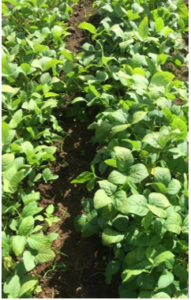
Figure 2.5.1: Canopy of soybean under micro sprinkler irrigation
2.5.2. Identification of the optimum irrigation regimes and application rates for legumes;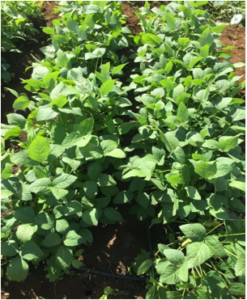
Figure 2.5.2: Canopy of soybean under drip irrigation system
2.5.3 Testing of harvested rainwater for quality and suitability for use in legume production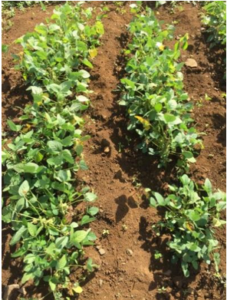
Figure 2.5.3: Canopy of soybean under (control) Rainfed irrigation
The greatest yield was achieved under drip irrigation system which was due to the high efficiency of the system, slow, frequent and precise application of water directly to the root zone with minimal evaporative loss. It was also observed that there was limited weed growth under drip irrigation as compared to sprinkler irrigation and rainfed conditions.
- Different irrigation systems (drip and micro-sprinkler) and form of 13:13:20:2 fertilisers were evaluated for common bean production
The water demand has increased sixfold in the last century and continues to grow at a rate of 1% per year. The nitrogen-fixing potential of Phaseolus vulgaris is normally categorized as weak in comparison to other legumes. Nitrogen fertilizers are commonly used in bean production to achieve high yields. Plants grown under drip irrigation system showed promising results in terms of growth, development and yield as compared to micro sprinklers.
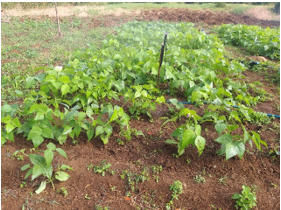
Figure 2.5.4: Drip 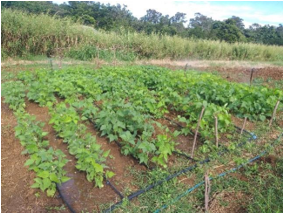
Figure 2.5.5: Micro-sprinkler
- Different irrigation systems (online dripper, inline dripper and micro-sprinkler) were evaluated for Common bean production
Ever since farmers started crop cultivation, they have been able to increase their productivity by relying less on rainfall and focusing more on irrigation systems. Upon adoption of irrigation, farmers were found to be less dependent on natural rainfall.
The most efficient irrigation method was evaluated for common bean production namely online drip system, inline drip system, micro sprinkler system and rainfed(control). Plants grown under online drip system produced the highest yield and lowest weed emergence were observed when using this irrigation system.
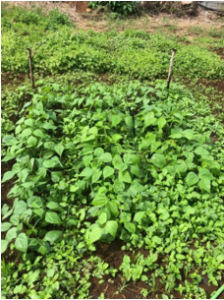
Figure 2.5.6: Online Drip System 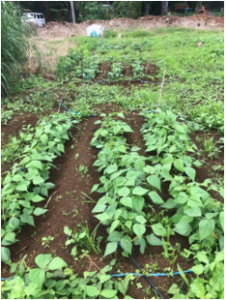
Figure 2.5.7: Micro-sprinkler system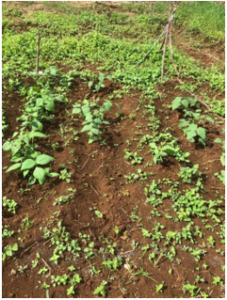
Figure 2.5.8: Inline System 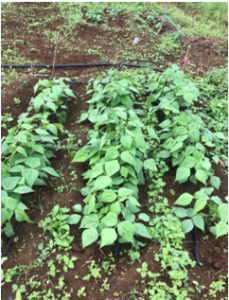
Figure 2.5.9: Rainfed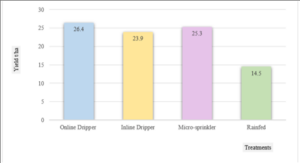
Figure 2.5.10: Total yield achieved under different systems